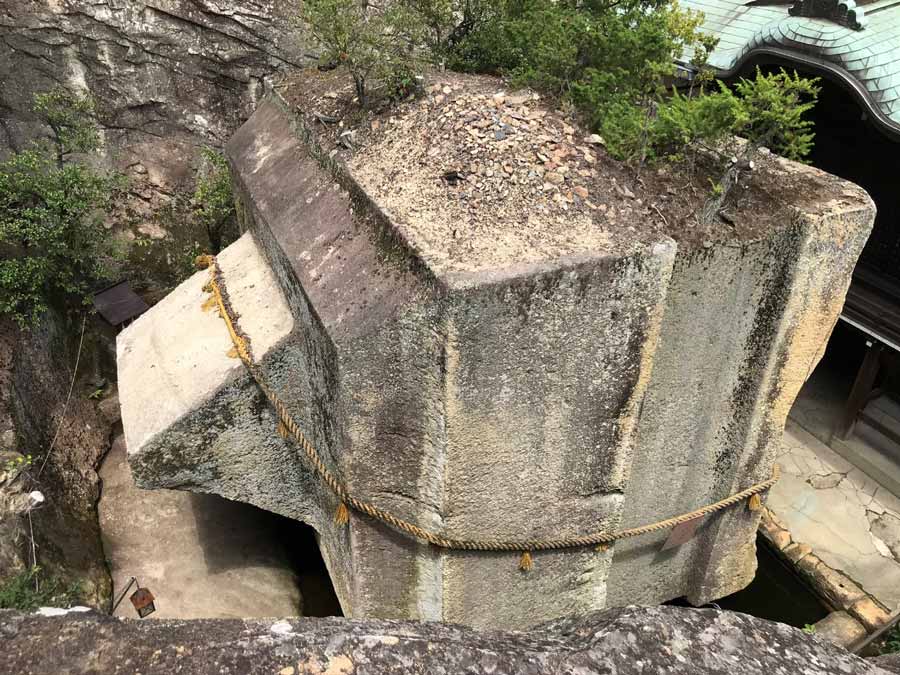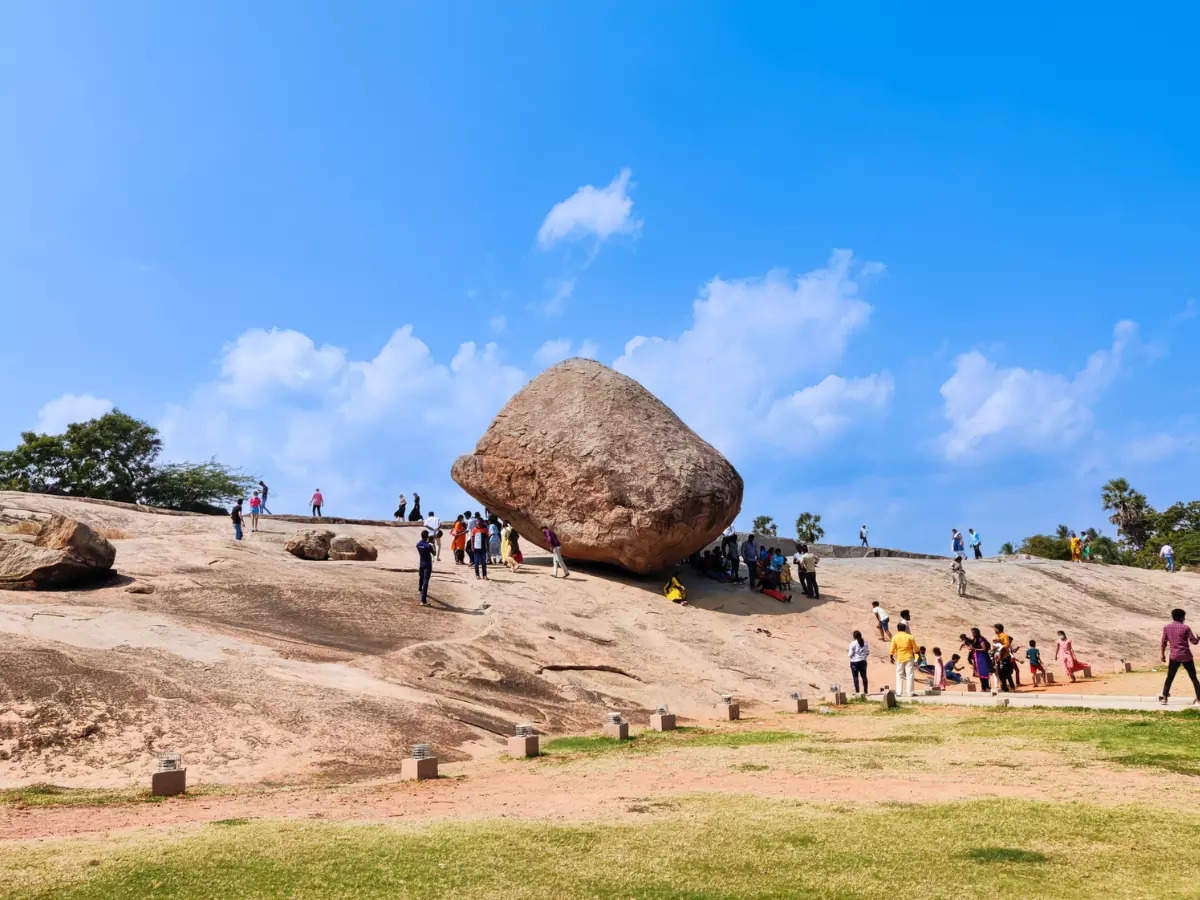In Eastern Saudi Arabia, there is a huge stone lying on the side of the road. At first glance, you will think that it is floating, but in fact, it is. With only three tiny pillars, it can support a huge stone above. So from here, research and discussions between professors, doctors and curious people began. But there were no clear results. According to legend, the Prophet Muhammad flew up to the sky from this place and the stone tried to fly, but in the end it was ordered to stop, so it just floated there. With a perfect cut that looks like using modern Layer techniques to split the stone in half, along with mysterious drawings and symbols on the surface, the Al Naslaa stone in Tayma oasis, Saudi Arabia, has aroused the curiosity of tourists, and also made scientists have a headache.

Since the discovery of the mysterious stone weighing hundreds of tons in 1883, scientists have not been able to explain the origin of the cut, or whether this is a natural phenomenon. Each half of the stone is about 7m high, balanced on a small rock below. It is estimated to be up to 10,000 years old. Some people believe that this is a natural phenomenon, and that vibrations in the ground have split the stone in half. There is also a hypothesis that this is the work of a prehistoric civilization with a high level of technology. Although there is no satisfactory answer, this stone still attracts thousands of tourists to the Tayma region every year.
The Ishi-no-Hoden megalith in Hyogo, Japan has always intrigued viewers because it strangely floats in the air. Scientists have not been able to provide any clues about this giant stone. It is one of the biggest and oldest puzzles in both Japanese history and archaeology. When viewed from a distance, many people are amazed to feel that the stone is flying above a lake. According to records, the lake containing the stone never dried up, even during long droughts. The Takasago City Council together with the Otemae University History Laboratory conducted studies on Ishi-no-Hoden in 2005 – 2006. Three-dimensional measurements were taken, and the characteristics of the surrounding rocks were also analyzed.

However, archaeologists and traditional historians have not come up with any other clues about the carving tool and why it was made. Experts can only be certain that Ishi-no-Hoden was made by a developed and advanced civilization. The person who designed the rock created a masterpiece that has lasted for thousands of years. The Japanese people have a legend about this mysterious 500-ton rock. According to legend, more than 2,000 years ago, an epidemic broke out in Japan. At that time, 2 gods residing in this rock gave instructions to Emperor Sujin in a dream. The emperor immediately followed the words of the 2 gods and the epidemic disappeared. The Kyaikhtiyo Pagoda has a history of 2,500 years - and is built on a rock with an altitude of over 1,000m above sea level, the rock is 7.3m high and 15.2m in circumference - called the golden rock, simply because the rock and the pagoda are covered with gold leaf.
Looking at it from different angles, visitors have the feeling that this giant rock could roll down at any moment. However, it has remained standing for thousands of years, breaking all the principles of gravity. Surprisingly, associated with the golden rock is a mysterious and interesting legend about the Buddha coming to this place to preach. According to legend, the Buddha gave a strand of hair to a hermit named Taik Tha. Before passing away, the hermit gave the Buddha's hair to King Tissa. The two gods Zawgyi and Naga helped the king find the rock under the ocean. The rock was brought up and placed on Kyaikhtiyo Hill. The Buddha's hair was kept in the rock and a small pagoda was built to worship the Buddha's relics. It is believed that thanks to the Buddha's hair, the rock still stands firmly in such a precarious position, even though it only touches the mountain surface by 78 square centimeters. Believe it or not, this phenomenon has yet to be explained.
The Krishna Butter Ball located in a town in the Kancheepuram district of Tamil Nadu weighs over 250 tonnes, is 6 metres high and has a diameter of 5 metres, and is perched on a 45-degree slope. Despite its enormous size, the rock remains balanced on a surface that has very little contact with the hillside. It has not rolled down the hill, nor has it budged despite all attempts to move it. In the 7th century BC, a Pallava king in India became the first to attempt to move the rock to prevent it from falling into the hands of carvers, but was unsuccessful. In 1908, Arthur Lawley, the governor of Madras, attempted to move the rock from the hillside, fearing that it could roll down at any moment and destroy the town at the foot of the hill. Seven elephants were used to move the rock, but it did not budge even a little. Until now, scientists have not been able to explain what made the rock stay in such a balanced position.
The rock is called Vaan Irai Kal by the locals, who believe that the gods placed the rock here to show their power. Although it is not possible to move the rock, many people believe that it is still advisable to be cautious, and that sitting under the rock to avoid the sun is not a good idea. What do you think? Leave us a comment below. Asuka Village in Japan is an ancient land with many valuable historical relics. One of the most unique features of this village is the existence of the largest and most unusual of the strange rocks called Masuda-no-iwafune. This monolith is located near the top of the hill in Asuka, measuring 11 meters long, 8 meters wide, 4.7 meters high and weighing about 800 tons. Its top surface has been completely flattened and has two 1 meter long square holes with a parallel ridge. So what is the nature of this stone and its purpose. Who made it, when and why? These are all questions without a definite answer. After all, what kind of master could have created such a flawless work is still a mystery to mankind.


